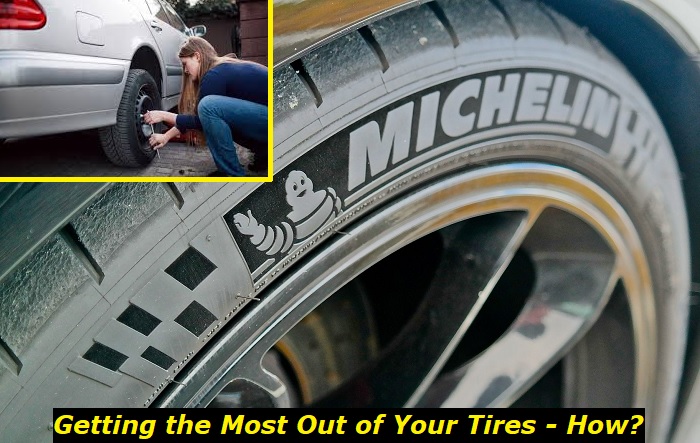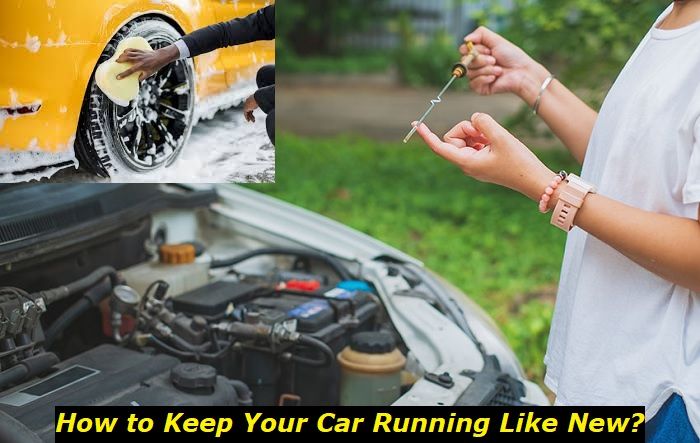We usually kill our tires by ourselves. The simple rules that will help you drive the car with the same set of tires much longer and safer are well-known and are not a secret at all. But the hardest thing is to implement those rules into your driving habits because our habits are so hard to change.
So, today, I'm going to tell you how exactly you can save your tires and get the most out of them. This will help you invest less and enjoy more using your vehicle. Of course, the tire's lifespan depends on several factors that don't depend on you or your habits but at least, you will do everything you can to prolong its life.

Here's what you should do:
1. Check the pressure regularly
Tire pressure is one of the culprits of poor handling and bad gas mileage. In some cases, poor tire pressure may even kill you by getting your vehicle into a road accident. For example, a sharp turn or braking with one tire having very low pressure may lead to your car rolling or to a complete loss of traction.
But one more thing that you should know is that too low or too high tire pressure kills the tire itself very fast. The wear of a poorly inflated tire is three times more intensive than when it has normal pressure. Overly inflated tires will wear unevenly and also quite fast.
2. Don't use many chemicals for tire care
If you ask a shop assistant in an auto part store about special chemicals for your tires, you will be amazed by the number of offers. But those are chemicals and they aren't always good for the health of your tires.
Some cleaning chemicals or mixtures for making your tires look black and shiny are so toxic that can actually destroy the rubber and lead to a weak surface. The next time you scratch the tire against the curb, it may just be torn apart because of the effect of chemicals.
3. Remember about wheel alignment
Wheel alignment is one of the service features that is very often overlooked. While it costs relatively little money, it may save your tires and give them another year or even two compared to if you don't align the wheels.
Bad wheel alignment literally makes your wheel bend to one of the sides and this causes issues with the surface of contact of the tire with the road. So, one of the sides of your tire will be worn very quickly and the other will be just like new. But this will not help - you will throw away the tire much sooner than you think.
4. Tire balance check - twice a year
You may have noticed that for balancing a certain wheel, specialists use a balancing machine and some small weights that they attach to the wheel rim. If this small weight falls apart, the wheel is unbalanced. It means that it will not touch the road with the entire surface. Also, it will mean that the wheel will shake a little when you drive.
Unbalanced wheels are one of the major reasons why your tires die much earlier than expected. Check balancing twice a year or anytime you notice the symptoms of unbalanced wheels: bad handling at high speed, vibrations, and bad tire wear.
5. Don't accelerate sharply
If you want to ensure that your tires are OK for as long as possible, you will need to adjust your driving style. Don't allow tires to slip at any time. Very often, when you want to quickly accelerate or just to show off a little, you will step on the gas pedal sharply and the drive wheels will slip creating a lot of sound and even smoke. This is the smoke from your money burning - the tires are dying really fast with that driving style.
The slow accelerations and calm driving are the best for your tires. But no, you can actually drive actively, just make sure your tires don't slip and keep proper traction with the road.
6. Don't let your wheels be blocked when you brake
This is another reason why your tires will be worn out fatally. If your wheels are blocked, the tires literally slide on the rough asphalt or concrete making the life of a tire really hard and short. The same happens when you turn sharply applying your handbrake to make the rear end lose traction and go skidding.
Anytime your tires slide on the road, the rubber suffers and wears intensively. This leads to issues like torn tires or micro damages that build up over time and threaten your safety. Also, the efficiency of such tires is quite questionable after some time.
7. Store the tires correctly
I've seen so many cases when people just put their winter tires one on one in their garages. But this leads to misshaping of tires after a month or two. Especially, the tire that lies on the floor will suffer. When you decide to put it back on your car, it will not get its perfect shape back.
Storing tires is only safe in two ways:
On a special tire stand where the tire is placed vertically and is supported at least on two points.
On a rim with the proper pressure.
Also, make sure that you don't store your summer tires in freezing temperatures or your winter tires in a boiling hot garage. Find a place where the temperature is more or less stable. After improper storing, your tires may catch lots of problems like micro-cracks, changed properties of rubber, etc. They will not live as long as you expect them to.
8. Tread wear is a pretty tricky question
When I think of how you can the most out of your tires, I can't help but remember those tread wear recommendations that tire manufacturers now give. They will place those winter indicators between treads at about 7 mm high and the entire tread is about 9 mm high. So, they think it's OK for you to buy a tire and use about 2 mm of its tread height and then just throw it away.
But you should worry about actual safety investigations that show that 4-5 mm tread is completely OK for a winter tire while summer tires may have about 2 mm tread height. This is much lower than most tire manufacturers place their indicators of a completely worn tire.
So, don't believe those indicators and always check whether your tire is still OK by yourself. These guys just want you to buy more and more tires.
How can you understand that your tires are not good anymore?
Even if you desperately want to get the most out of your tires, you should use them in that case only if you are sure they are completely safe and won't let you down on the road. It's not always possible to identify if the tire is safe just by looking at it from a distance. You need to take some time and investigate the tire according to some important factors.
Here they are:
- No cracks. You need to investigate the tire closely, to rub them with your hand to make sure that the rubber is not cracked. If it is, just find someone who can recycle these tires and buy a new set.
- The tread is still there. You need to look at the tread and make sure that it's still going to work. It should be over 5 mm high for winter tires and over 2 mm high for summer tires across the entire surface.
- The tread wear is equal. If on one side of your tire, the tread is 7 mm and on the other side it's 5 or 4 mm, such a tire is not good anymore.
- There are no damages. If the tire has some kind of lumps, cuts, or other damages, it's not going to be the perfect thing for your wheel.
- The tire is not old. I believe that a tire that is more than 7-8 years old is not a good tire to use on your vehicle anymore even if it still looks good.
These are just some basic things you may use to understand if the tire you are going to install on your vehicle is still good. Look at that set of tires that you are keeping in your garage and make sure they are still OK and ready to give you another season of safe and comfortable driving. If not, then better think of buying new tires!
Take this seriously. You need to understand that extra costs are worth it when it comes to your safety. And bad tires are not adding any safety to your driving. They are doing just the opposite - making your chance of getting into trouble on the road much higher.
Final thoughts
I believe, now you know how to understand if a tire is still good to go. Also, you know how to get the most out of your tires and avoid spending money on new ones while you still can use the old set and be OK.
Don't let tire manufacturers fool you and make you spend hundreds of dollars every season when you should be doing this once every three or four years. Remember that, on average, a good set of tires is made to last about 50,000 miles or even more, depending on the brand and model of the tires in question.
About the authors
The CarAraC research team is composed of seasoned auto mechanics and automotive industry professionals, including individuals with advanced degrees and certifications in their field. Our team members boast prestigious credentials, reflecting their extensive knowledge and skills. These qualifications include: IMI: Institute of the Motor Industry, ASE-Certified Master Automobile Technicians; Coventry University, Graduate of MA in Automotive Journalism; Politecnico di Torino, Italy, MS Automotive Engineering; Ss. Cyril and Methodius University in Skopje, Mechanical University in Skopje; TOC Automotive College; DHA Suffa University, Department of Mechanical Engineering






Add comment